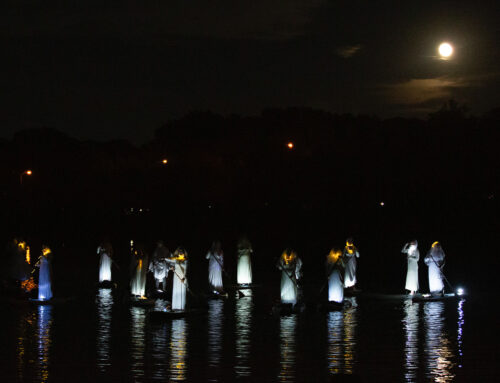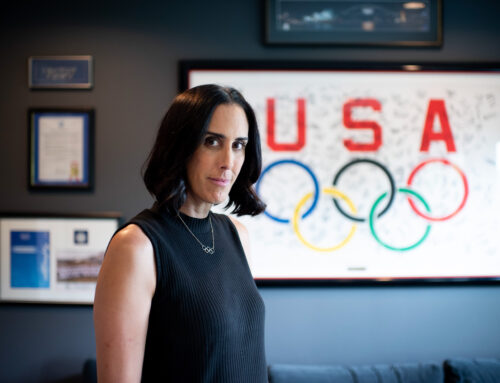A quarter of a million Texans carry firearms — nearly 10 percent of them here in Dallas County.
By Lori Stahl
If the Texas Department of Public Safety holds a contest for the most enlightened person ever to seek a concealed weapon permit, Bob Coats ought to apply.
He’s a card-carrying member of the National Rifle Association who thinks both the NRA on one hand, and “liberals” on the other, have made the issue of gun ownership way too political.
For the neighborhood native, who attended Woodrow Wilson High School and has lived in his current home for more than 20 years, there are no easy answers. But after hearing one horror story after another from neighbors and friends who were victims of crime, he decided to take action.
Not long after the Texas Legislature gave residents the right to carry concealed weapons — if they pass the permitting process — Coats and his 23-year-old son went to a gun range in Grand Prairie to take the course.
“I don’t go around looking for trouble, and I would hope I would never have to use a gun,” he says.
But he’s concerned about crime, skeptical of the police and protective of his family, saying: “Sometimes you’ve got to do something for yourself.”
•••
Coats isn’t alone.
More than 240,000 permits have been issued since Texas began licensing concealed weapons to residents in 1996. Dallas County has 21,369 permit-holders, the second highest number in the state. (Houston’s Harris County has 36,187 people licensed to carry concealed weapons.)
And in just five zip codes in Lakewood/East Dallas (75206, 75214, 75218, 75223 and 75204), 1,271 people are licensed to carry concealed weapons.
People on all sides of the gun issue tend to agree that those numbers probably don’t accurately reflect the number of people carrying concealed weapons at any given time.
“We were dismayed — many people who are worried about people having guns out loose in society were — when that law was passed,” says Jan Crabtree, co-president of the Dallas chapter of the Million Mom March, which wants to reduce the number of weapons in the general population.
“I’m sure there are a lot of people who carry concealed weapons who don’t go through the training.”
A new permit costs $140 and only those who pass criminal background checks and get trained by a certified instructor are eligible to apply. The training classes typically last 10-15 hours and cover both practice on a shooting range and classroom lessons on state law and firearms safety. Permits are good for four years.
Unlike many who legally carry a concealed weapon, Coats says he is not a gun aficionado.
“I’m not a hunter, and I don’t like killing animals,” Coats says. “I almost cause accidents driving to avoid running over squirrels.”
But his car and home have been burglarized in recent years, and two of his wife’s friends were victims of purse-snatchers. There have been other horror stories in the neighborhood near the intersection of Mockingbird Lane and Abrams Road.
“Right around here, which I’d consider to be a pretty nice neighborhood, there’s something going on all the time,” Coats says.
That happens to be the same intersection where another neighborhood resident, Steve Hargrove, was the victim of an attempted carjacking several years ago. He and his then-18-month-old child were stopped at a red light around 9:30 p.m. when a man confronted him.
“He leaned on the window and said: I’m taking this car,” Hargrove recalls.
With a child strapped in next to him, Hargrove decided there was no way he’d let the man take the car. So he says he reached into his glove compartment for a gun and told the would-be robber: “You just died.”
The man fled.
“I went through absolute sheer terror after that because I thought: Would I have shot him? Would I have pulled the trigger?” Hargrove says. “I will tell you to this day I think I did the right thing.”
That incident happened before Texans could legally carry concealed weapons. When it became legal, Hargrove said he took the concealed weapon training class and received a permit.
But he says he let the permit expire when his children became old enough to drive his car, where he sometimes kept a gun.
“I don’t know if I want my 16-year-old daughter to have a gun in the car with her,” says Hargrove, who added that he was more concerned about teenage acquaintances than his own child’s ability to use it responsibly.
Hargrove and Coats fit the demographic profile of the typical concealed handgun permit holder. According to the Texas Department of Public Safety, three out of four people with a valid permit — 74 percent, to be exact — are men.
But the state’s typical permit holder doesn’t fit the pattern of the likeliest crime victim in Dallas, according to local and state statistics.
Although men hold three-quarters of the state’s concealed weapon permits, they were crime victims in less than half the city’s reported cases in 2002, according to Dallas police statistics.
One area gun trainer said the state’s statistics are consistent with his client base.
“Most are middle aged men … about 20 percent are women,” says Jack W. Griffith, a Euless-based handgun instructor.
Some say more women should consider carrying guns since they are more often victims of crime.
“I want all women to have a concealed handgun license,” said Judy Rhodes, founder of Diva, Texas Women’s Shooting Sports.
Her organization offered concealed weapon classes for the first time this year and received what she says was a good turnout from women who were not part of the group’s original focus on shooting sports.
“We had a lot of real estate women, and that’s what we’re trying to focus on now,” Rhodes says. “We had one who had a problem with an open home with a man coming in” to attack her.
Women are vulnerable, particularly when they’re out alone, Rhodes says, but many have traditionally been afraid of handling firearms.
“A lot of women are afraid of handguns, and the reason they are afraid is because they don’t know how they work,” says Rhodes, whose group will offer a class again in the spring that shows women how to handle, load and unload guns.
But the biggest determinant of who will be a victim of crime may be geography, not gender.
City figures show that violent crime, such as murder, rape and assault, occurs at much higher rates in the southern half of the city than in the north. And the city’s least experienced patrol officers work at divisions in the southern half. Meanwhile, residents of Southeast Dallas, which is home to neighborhoods with some of the highest crime rates, have the longest average wait to a police emergency call.
In the northern half of the city, many Dallas neighborhoods with large clusters of concealed weapon permits actually have relatively little problem with violent crime, according to state and local data.
Of the city’s 196 reported murders or negligent homicides in 2002, for example, only 29 occurred in five zip codes in Lakewood/East Dallas (75206, 75214, 75218, 75223 and 75204.)
Those numbers bolster the arguments of gun control enthusiasts, who say the concealed weapons give some people a false sense of security.
“I think they have kind of a fantasy feeling that someone will draw a gun on them, and they will draw theirs, and they will have a shoot out,” says Crabtree from the Million Mom March.
In reality, she says, “it doesn’t protect them. You very seldom hear about occasions where they have protected themselves. We just feel that the more guns that are out there in society, the more people who are going to get hurt.”
But she says her organization spends most of its time working on assault weapon bans and other gun-related issues, rather than trying to overturn the concealed weapon law.
“We understand the gun culture here,” she says. “Here in Texas, we don’t think we can win that one right now.”





